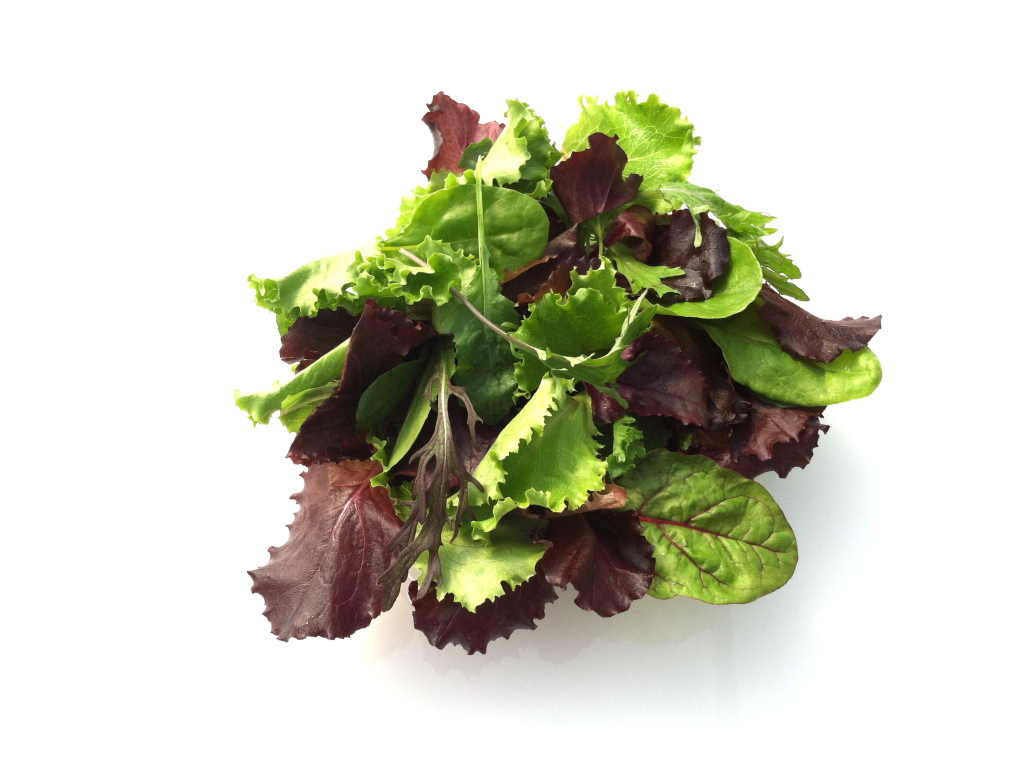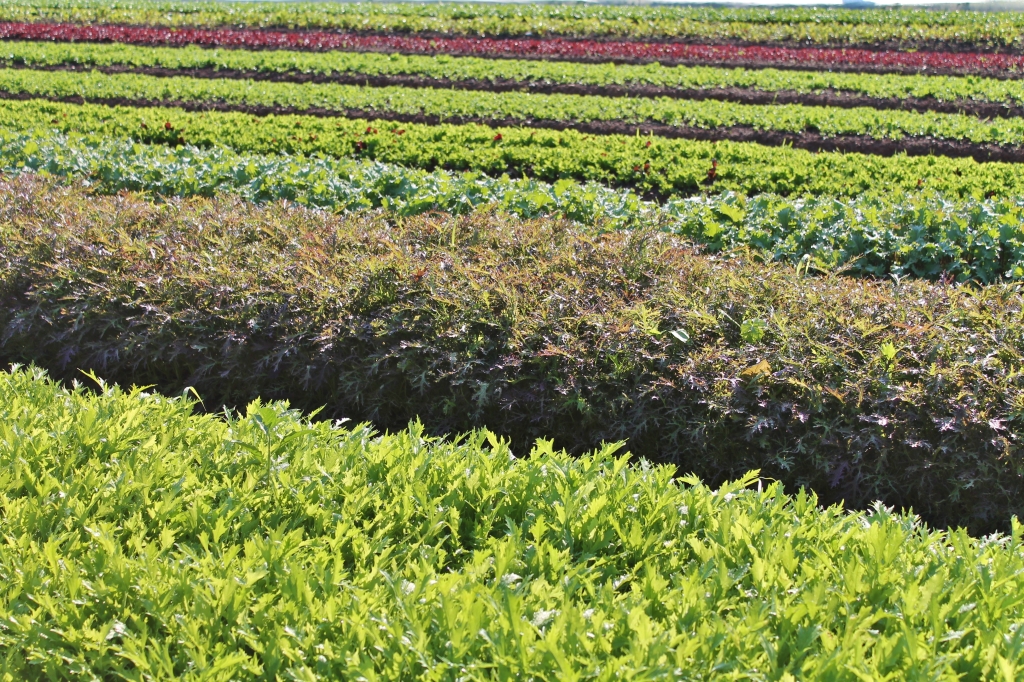Spring Mix, from Seed to Plate
Let me first state that Spring Mix is just that- a mix of different lettuces and greens, not a certain type of seed or name of a plant. Some of us (*ahem. Myself*) not familiar with farming and growing things may not have known this.
Now that we’ve got that cleared up…
I hope you’ve had the opportunity to try our spring mix. If you haven’t, I hope you do soon. It is really fantastic. And I’m not just saying that because I have it for lunch every day during the season—our chefs and retail customers love it too. It is super-fresh, really tasty, and looks wonderful.
There’s a lot that goes into the delicious salad mix we produce, from sourcing to seeding and washing and storage.
We source only organic seed, which means, among other things, that it is completely GMO-free. We grow the spring mix—also called baby leaf lettuce, or just baby leaf—on raised beds.
To prepare and loosen up the soil, we till it. Once the soil is nice and pliable, we run the bed shaper over it and build our raised beds, which we seed directly into. We incorporate amendments approved for organic use to bring the soil fertility into balance. We also incorporate compost to help feed the biology in the soil. When the soil and the beds have been prepared, we are ready for seeding.
All of our baby leaf is seeded using a mechanical seeder in high-density beds.

Seeding beds
Four-to-five days after seeding, we have germination! (The miracle of Life.) All types of lettuces and various mustard greens begin popping up out of the soil. Three to five weeks later, depending on the time of year and weather conditions, the greens are at our baby leaf size. We continue to hand-weed and water throughout the growing process.

Hand-weeding a bed of lettuce
When the lettuce is the correct size, we harvest it using a mechanical harvester. We generally harvest, wash, and pack all in the same day—the day of shipment. This ensures freshness and quality. (Think about it- the salad greens are arriving in the store/at the restaurant a day or two after they have been cut!) We cut the crop only once to maintain top quality, not taking a second cutting.
We bring the different greens in from the field and blend them together- creating the spring mix. As we do this, we visually inspect for any foreign materials (compost sticks, bugs, fun things). The mix then passes through a flume-type wash system with cold water and a peroxide-based sanitizer.
The greens are all then packed, by (gloved) hand, in our dedicated clean room. From there, it is a short step to the consumer.

The finished product










